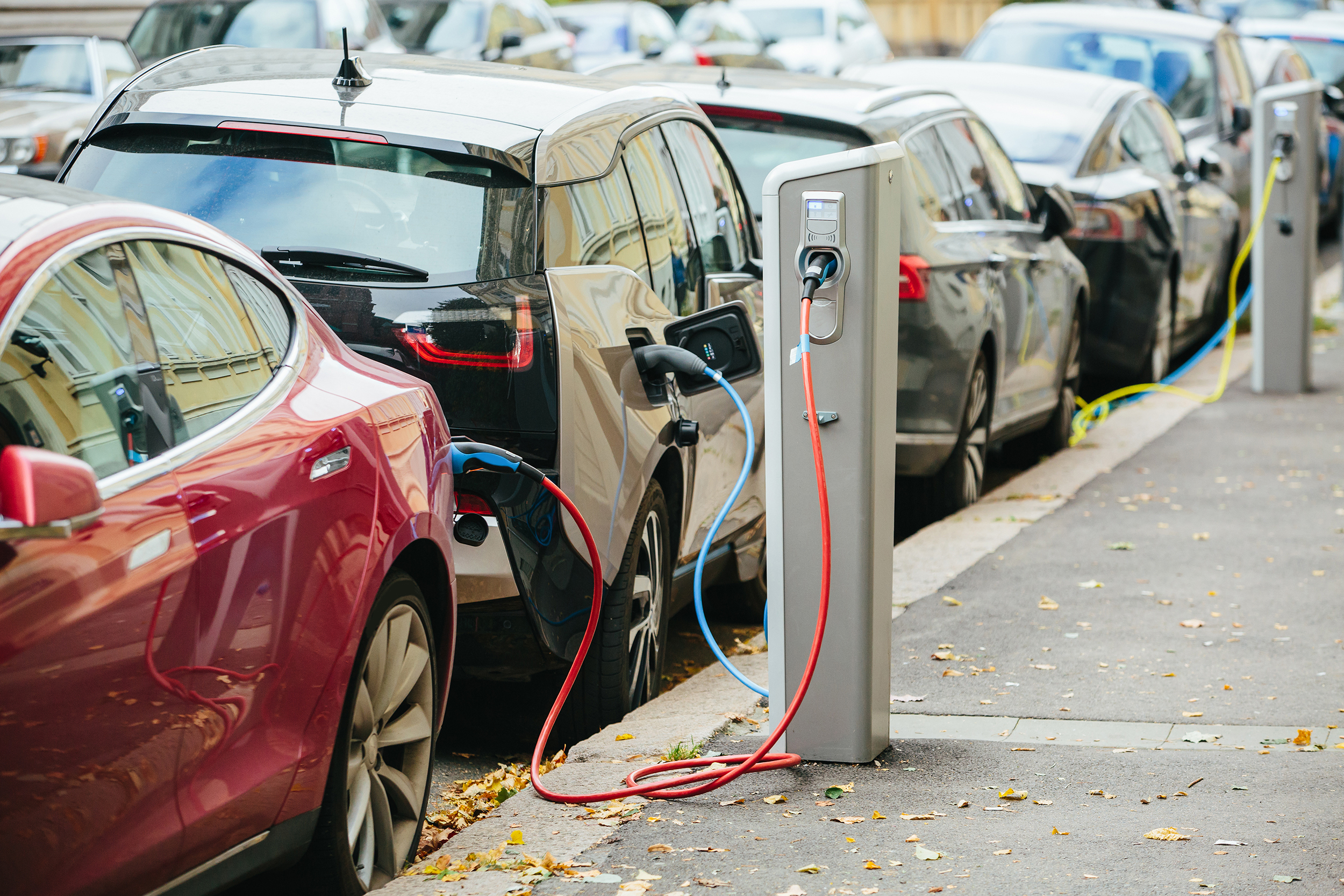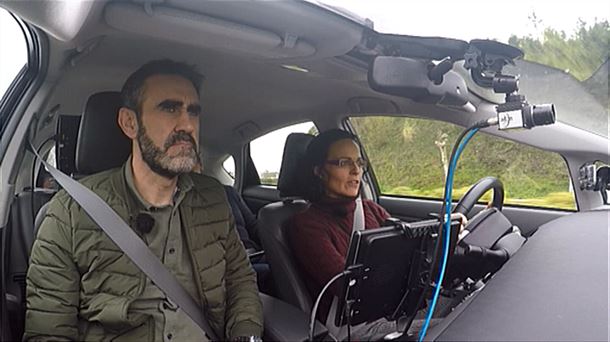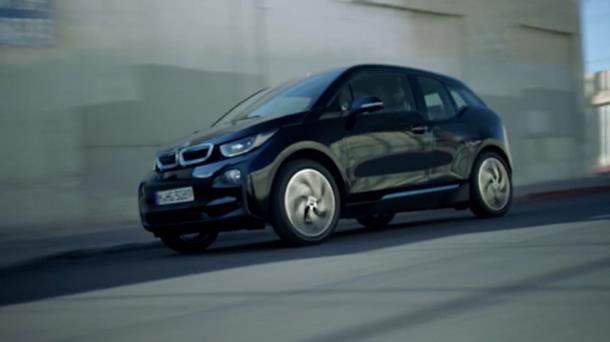Text written in Basque and translated automatically by Elia without any subsequent editing. SEE ORIGINAL
Electric transport Electric transport
2020/03/01 Oihana Otaegi Madurga - Garraio Sistema Adimendunak eta IngeniaritzaVicomtech | Gorka Hoyos Berastegi - Kalapie Elkartea | Arrate Alonso Gómez - Seinalearen Teoria eta Komunikazioak TaldeaMondragon Unibertsitatea Iturria: Elhuyar aldizkaria
It is expected that within twenty years most of the vehicles will be electric. It is to be expected that towns and cities will become more friendly by reducing noise and smoke. From the energy point of view, it can also contribute to the energy transition. But it will require new infrastructures and the adaptation of the cities.In the simplest case, the increase in charging points and the significant increase in electrical production. Many questions come from the hand, how will all the necessary electricity be achieved? Where do we get the precious raw materials necessary to create the batteries? Is this type of transport really more sustainable?
To discuss all this, Elhuyar organized an open reflection on electric transport at the San Telmo Museum. He invited three experts and invited the public to participate in a discussion session. The objective was to reflect on whether electric transport is a suitable solution to the transport model of our towns and cities. In the following pages, the views of the experts in the round table are collected. The experts are:
Oihana Otaegi Madurga, director of the Intelligent Transport and Engineering Systems department at Vicomtech. He is a specialist in autonomous cars, including artificial vision.
Arrate Alonso Gómez, researcher in the area of Intelligent Transport of Mondragon Unibertsitatea. Expert in car connectivity, adaptation of the electric network and organization of services.
Gorka Hoyos Berastegi, president of Kalapie, an association that for many years has fostered the use of bicycles in San Sebastian and has carried out profound reflections on urbanism and transport.

Ed. Scharfsinn, Shutterstock.com
“To achieve sustainable mobility it is not enough to promote the private use of electric cars”
Oihana Otaegi Madurga
Director of Intelligent Transportation and Engineering Systems at Vicomtech
Greenhouse gases associated with energy production are the main cause of climate change. Transport accounts for 30% of the total energy consumption, so it is necessary to reduce the energy used for mobility. 2000 Watt sets the limit of individual energy consumption necessary to achieve a sustainable and just society, with impact on all sectors, including mobility. It would be enough to have a constant power (primary energy) of 2000 watts per person on earth to ensure their prosperity and quality of life.
Profound changes are taking place, especially in terms of transport: we have seen in the market new electric vehicles with batteries of greater autonomy, we are at the center of the development of the technology to achieve an autonomous vehicle… All this allows us to believe in an efficient transport, both from the energy, climate and security point of view.
Towards comprehensive transport services
Autonomous vehicles will promote the incorporation of large-scale electric mobility. On the one hand, automation itself can improve energy efficiency, as it reduces accelerations and decelerations and is able to keep the car always at an optimal speed. This will contribute to a better continuous flow of vehicles in infrastructures and will allow an optimization of the transport system as a whole. On the other hand, these electric and automatic vehicles, such as shared cars or the Mobility-as-a-Service, can be associated with other innovations in the mobility sector, such as the urban transport rental service. These subscription systems will allow to obtain integrated transport services.
To achieve a truly sustainable mobility, it is not enough to promote the private use of electric cars, but we must bet on vehicles that spend more time in the street and maximize the kilometers that circulate. In this context, the use of autonomous vehicles will have a great influence, taking into account the flexibility in its use and its ability to offer 24 hours of service. In addition, if combined as a shared car or service with the public mobility system, it can be previously planned, depending on the schedule of the services, when and how to recharge the batteries to ensure greater stability and flexibility in the electric network.
New developments in the laser
There are still some limits to overcome to get an autonomous car. Artificial intelligence and deep neural networks have allowed us to improve the perception systems of the cars: until now they perceived the objects of their environment with cameras, and now more and more perceive them and measure with laser using LIDAR systems. LIDAR technology poses new challenges such as being able to process a high number of points and reduce the price of the entire system (LIDAR and processing hardware).
The reaction of cars in relation to our ethics
The complexity of these systems and the validation of these autonomous systems and cars is the first limitation that appears to us, showing that they are safe in all situations. At present there are no homogeneous systems of valorization of these technologies. The test systems used drive kilometers and kilometers and keep all the reactions and do not guarantee that the vehicles are able to face any situation.
The second limit is that of responsibility. Until now, in any situation, it was clear who was the responsibility, and the driver always had all the responsibility of the car. But when these systems are installed on roads, who is the responsibility: the driver, the car manufacturer or the company that has developed the perception system? The responsibility is related to ethics, since they will program the car according to the type of damage that you want to minimize, so that it reacts in a certain way before a situation.
“We hope a technological invention will come out”
Gorka Hoyos Berastegi
President of Kalapie
It is evident that, driven by economic growth, in the busiest areas we have included and accumulated motor vehicles without criteria, controls or limitations. Globally, we have freely incorporated vehicles in movement to exceed 1.3 billion. And not only that, the manufacture and sale of motor vehicles continues to grow: In the year 2000 we have gone from manufacturing 40 million cars to manufacturing 72 million in 2016.
The management of urban spaces, constructions and connections, both interior and interurban, has conditioned the existence of a universe of its own in the vehicle. In addition, the social economy pursued by automotive (manufacturing and repair of vehicles, research, number of jobs, obtaining and managing fossil fuels, roads, traffic management, insurance...) has turned one of the big lobbies in society. We have built cities for cars and cars, and they are owners of a large land space.
Ecological?
Now we live and suffer the pollution generated and accumulated by the use of cars over the years, and the consequences of meteorological change are evident. Based on a small hope, we want to act urgently for a technological invention to save us. Thus, without losing the social status acquired and the comfort of movement, electric vehicles have become fashionable as saviors of the situation in the center of sustainable mobility. In the confidence that in the future our cities will become cleaner and quieter, we have begun to suffer an important bombardment of news and advertising.
Studies that compare the levels of pollution of diesel vehicles, gasoline and electric vehicles begin to be published. Sometimes electric vehicles are the ones that generate less CO2 emissions throughout the product life cycle, while in other cases they are opposed. But all studies show that the pollution generated in the process of manufacturing the batteries of electric cars is equivalent to the pollution of the entire life cycle. Therefore, it is clear that all types of cars have a source and energy consumption and that electric cars are far from being “ecological”.
On the other hand, if one studies and takes into account the quantity of minerals that exist for the generation of batteries, the management of the recycling and the second life of the batteries, the clean sources of energy for the maintenance of electric vehicles, the price of the vehicles, the amount of electric vehicles of the future, etc., one can think that it is difficult or impossible for the electric vehicle to have an energy transition solution, unless drastically their use is reduced.
Cars outside the center
Part of the real solution is to carry out the displacements on foot or by bike without polluting the cars. As I said at the beginning of the article, the cars have been conquering a large space of the cities, as if it were Big Bang, until they reach a situation of collapse. And now we have to promote a big crunch so that these spaces are reduced and become active spaces for people.
Without going further, we have some examples. Without resorting to the Netherlands, Fribourg or Copenhagen, we are close to a city that has had fruitful effects through the transformation of public space: Pontevedra. Since the 1999 cars began to leave the city center, the quality of life of the citizens has improved significantly, among other things because the air they breathe is much cleaner and people can move freely through the streets. What universe do we want for our society? Cars or active people?
“Electric transport will require the updating of urban planning”
Arrate Alonso Gómez
Researcher in Intelligent Transport of Mondragon Unibertsitatea
Electric transport has the ability to change the world. Do you think it's an abuse? Let's analyze some data. Electromobility has a direct impact on seven of the 17 Sustainable Development Goals. From the point of view of the enriched territories, it focuses on health and well-being, on the availability and non-pollution of energy, on actions to protect the climate and on sustainable cities and communities. In impoverished territories, moreover, it can promote gender equality. How? For example, in the congress SUM Bilbao 2019 (https://sumbilbao19.com/) was presented through the project “Santa Ana en Cleta”, in which the autonomy of women and the employment insertion through electric and conventional bicycles is fostered, and it is committed to eradicating poverty and reducing inequalities. It is clear, therefore, the impact that electric transport can have to promote positive developments globally.
But for evolution to be sustainable, transformations must be carried out in areas such as technology, social and normative. Technologically, first of all, it is necessary to carry out adaptations in electrical networks. On the one hand, it is necessary to properly size the network to respond to new devices that will connect to the network, since the current one will be small. On the other hand, it is essential to integrate renewable energy sources into the current electricity grid. Digitization will facilitate these evolutions.
Dynamics and new actors
On the other hand, it is essential to update the urban planning, that is, the creation of new infrastructure for recharging devices and the space corresponding to innovative users and transport services. In this new mobility ecosystem, which foresees so many dynamics and new actors, road safety cannot be forgotten. At present, thanks to connectivity, there is the possibility of sharing correctly and in form the security information. Therefore, both means of transport and infrastructures can act as sensors, after identifying dangerous situations and adopting appropriate measures to avoid emergencies. This is mainly due to ITS-5G and 5G wireless technologies. All these transformations will lead to the emergence of new services.
Education and transfer
At social level, the keys are in education and research and transfer (R&T). In formal education, from the ikastolas to the university. From culture and values to the capacities of professionals who face the challenges of the aforementioned technological transformation. Slow social changes are more necessary than ever to critical people who realize the current situation, and who are aware of the influence of their behaviors on a global level, to collaborative and transformative people.
In addition to formal training, the days and round tables organized around electromobility are essential, to provide people with information in an understandable way and through participatory talks.
R&D consists of transferring knowledge from the university or research centers to the industry to obtain a competitive advantage through the services and products that will allow this new mobility ecosystem. In this way, they will be able to adapt to the transformation and promote new businesses, increasing the job opportunities. We can already see in our streets the first traces of this evolution: chargers for electric cars, electric buses, bicycles and electric skateboards… —although the latter are sometimes annoying for people who move on foot and in wheelchairs. The updating of the regulations will be fundamental to guarantee the rights and positive coexistence of the users.

eu es fr en ca gl
Gai honi buruzko eduki gehiago
Elhuyarrek garatutako teknologia






